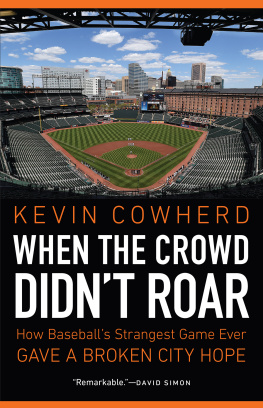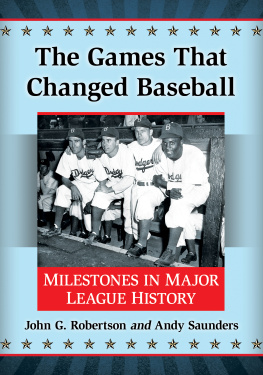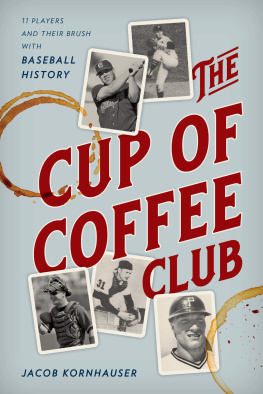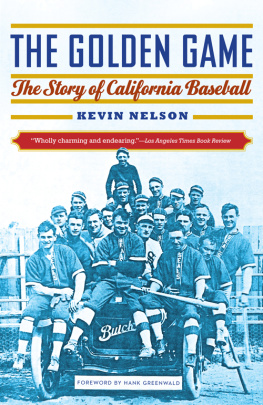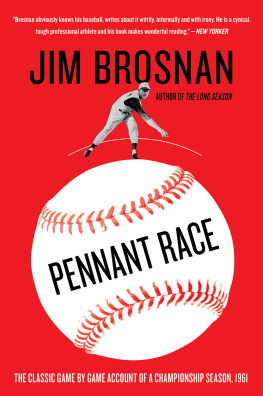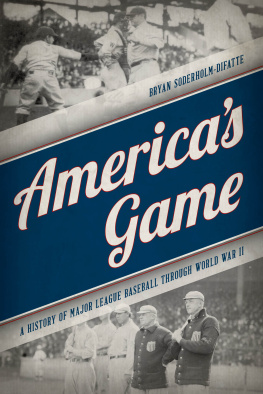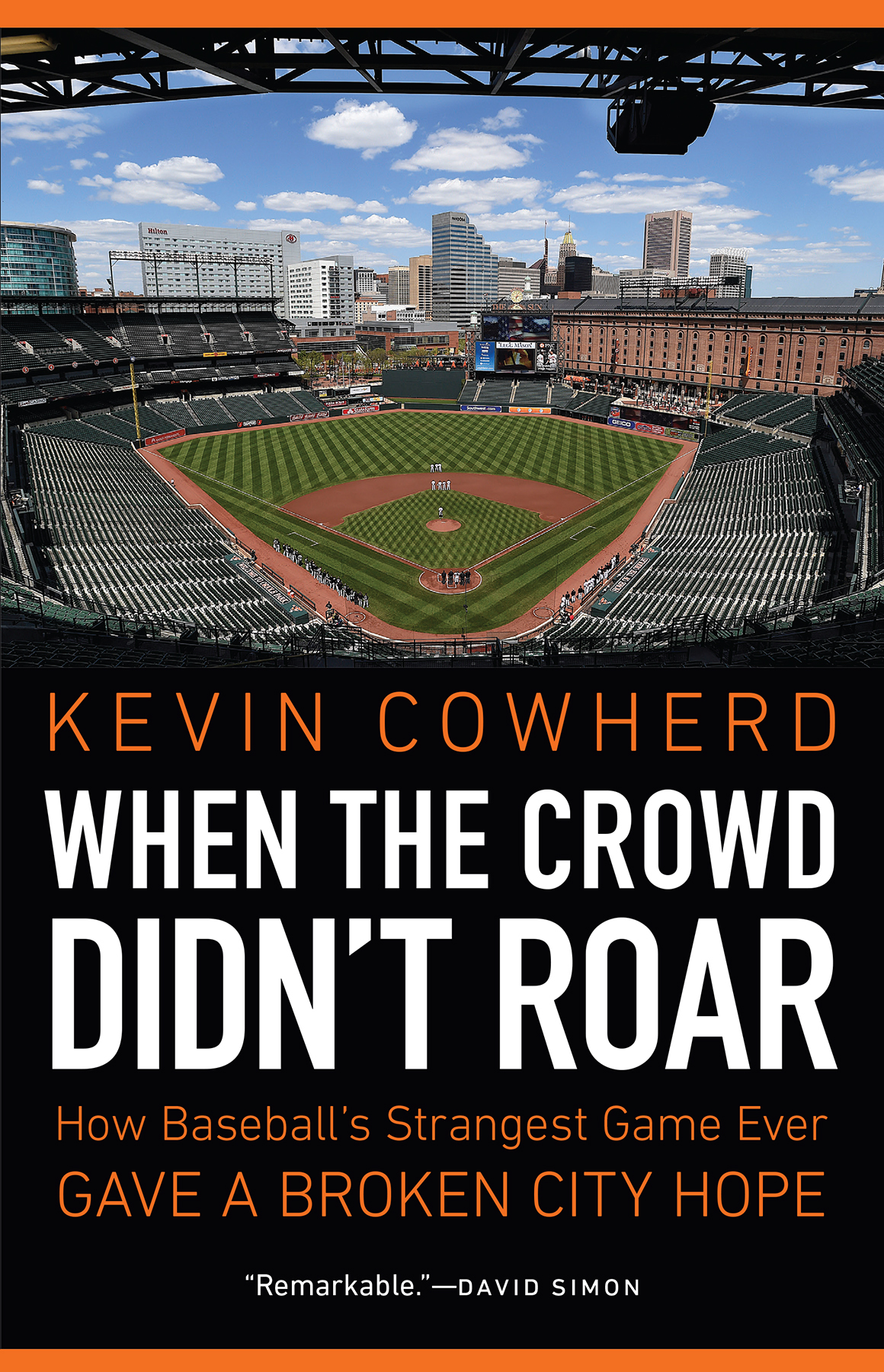
Kevin Cowherd has written a remarkable sports book that isnt actually about sports. Instead, it is a reflection on a single professional contest played in silencea historical anomaly in which an American city, challenged by both legitimate protest and grievous violence that followed the unnecessary death of a man, took a deep breath and played a baseball game in a locked stadium, without fans. And in that empty space, everyonefrom the teams owners, to the players, to the politicians, journalists, fans, and ordinary citizenshad to contemplate the hopes and fears and the failures and strengths of their city.
David Simon, creator and executive producer of the HBO series The Wire
Dad always used to say, if you hang around baseball long enough, you will always see something new. That was definitely the case when I watched this ball game in an empty Camden Yards. Kevin Cowherd has done an outstanding job capturing the uniqueness of this very odd day in baseball history and all that surrounded it.
Cal Ripken Jr., Hall of Famer and former Baltimore Oriole
When the Crowd Didnt Roar
How Baseballs Strangest Game Ever Gave a Broken City Hope
Kevin Cowherd
University of Nebraska Press | Lincoln & London
2019 by Kevin Cowherd
Cover designed by University of Nebraska Press; cover photo AP Images.
Author photo courtesy of author.
All rights reserved
Library of Congress Control Number: 2018041353
The publisher does not have any control over and does not assume any responsibility for author or third-party websites or their content.
To my wife and best friend always, Nancy. To my wonderful son, Sean, and his family: Karlye, Madeline, and Jack. To my beautiful daughter, Chrissie, and terrific son, Jamie.
To the best mom in the world, the incomparable Noreen Cowherd. And to my great friend Rob Hiaasen, too soon gone from this earth.
Go placidly amid the noise and haste, and remember what peace there may be in silence.
Max Ehrmann, Desiderata
Contents
A project of this nature could never be completed without the help of many others, and I am indebted to all who assisted.
None of it would have been possible without the tremendous cooperation of the Baltimore Orioles. I would especially like to thank Executive Vice President John Angelos, Vice President of Communications and Marketing Greg Bader, and Director of Public Relations Kristen Hudak for the access they provided, their tireless help in lining up interviews, and their insights into the teams operations during the five tumultuous days that form the setting for most of this book.
(A quick thanks, too, to Coordinator of Public Relations Kailey Adams, tasked with the all-important mission of making sure I was on the Orioles parking list and thereby able to avoid the usurious rates at downtown garages.)
Manager Buck Showalter and Orioles players Zach Britton, Chris Davis, Ubaldo Jimenez, Adam Jones, and Caleb Joseph were unfailingly generous with their time and candid in their recollections of what it was like to play behind locked gates, in an empty stadium, during baseballs strangest game ever. My heartfelt thanks to all of them.
So willing and eager was he to recount the events of that day that Chris Davis spent much of an evening with me at a bakery in suburban Baltimore and wouldnt let me buy him anything more than a coffee. Or maybe it was an orange juice. Adam Jones graciously invited me into his home and with his father-in-law, attorney and former NFL tight end Jean Fugett, listening in attentively, provided much-needed perspective on the angry youths rising up in Baltimores poorest neighborhoods and the not-so-subtle racial bias so many African American ballplayerseven those who are fabulously wealthyface to this day.
A special thanks, also, to Lt. Dennis Reinhard, the Baltimore Police Department commander at Camden Yards, who with infinite patience and minimum use of police jargon and acronyms walked me through the security procedures that kept so many fans safe when the protests over Freddie Grays death first turned violent. My thanks also to Vernon Conaway Jr., the Maryland Stadium Authoritys vice president of public safety and security, who diligently schooled me on the role that the ballparks emergency operations center played that day.
Kweisi Mfume, the civil rights activist, former Maryland congressman, and former NAACP president, deserves special thanks for his invaluable insights into Baltimores devastating 1968 riots following the assassination of Martin Luther King and for his keen analysis of how little has changed, on a socioeconomic level, for the citys downtrodden.
A note of thanks, too, to the administrative folks at Woodlawn Cemetery and Chapel for their help on my visits to the final resting place of Freddie Gray.
Others who offered their cheerful assistance, extensive knowledge, and memories of both the April 2015 unrest that gripped Baltimore and the historic No-Fans Game include Joe Angel, Mel Antonen, Jonathan Bernhardt, Jerry Coleman, Dan Connolly, Bob Davidson, Paul Doren, Rich Dubroff, Dan Duquette, Eduardo Encina, Pete Gilbert, Craig Heist, Kendall Hilton, Brett Hollander, Jim Hunter, Brad Hutcheson, Lee Igel, Mark Jacobsen, Colleen Kane, Roch Kubatko, Steve Melewski, Dawn Merguerian, Jim Palmer, Sharon Reuter, Chris Riehl, Dan Rodricks, Bill Rose, Rick Rutherford, Peter Schmuck, Brandon Scott, Bill Stetka, Gary Thorne, Mark Viviano, Hunter Wendelstedt, and Bernard C. Jack Young. I will never be able to repay your kindness.
Thanks to my buddy Kevin Richardson, ace videographer and photographer and former colleague at the BaltimoreSun, for his invaluable help and advice in selecting photos for this book.
A special thanks to my agent, Janet Pawson, for believing in this projecta sort of non-baseball baseball bookfrom the very beginning. And to Rob Taylor, my patient and able editor at the University of Nebraska Press, who also recognized the unique nature of this story and who provided steadfast support and guidance over these many months.
Finally a special thanks to John Eisenberg: friend, former Sun colleague, and gracious mentor to so many aspiring authors in the Baltimore area and beyond. John encouraged me from the start, quieted my doubts, and offered wise counsel about the publishing world when I wondered if this book would ever see the light of day.
And now it has.
Adam Jones awakens from a fitful sleep and gazes at the alarm clock.
Damn! Almost 7:30 already...
From the other room he can hear his thirteen-month-old son, August, stirring. This is Joness morning routine as a new dad: Drag himself out of bed in the early hours of a spring morning. Shuffle bleary-eyed to the little mans crib before he goes into full meltdown mode. Bring him to his mama, Audie, whos still sleeping peacefully.
Let her work her magic.
Yet even as the Baltimore Orioles All-Star center fielder throws off the covers, the worry thats gnawed at him for days returns.
Whats going to happen to this city? he wonders.
He flashes back to when he was a little kid, seven years old, a black man named Rodney King arrested and beaten by white cops in Los Angeles, the whole thing captured on videotape. Then came a trial, a stunning acquittal, and folks pouring into the streets of South Central to vent their rage, beating people and burning buildings for days and days.
Is that going to happen here?
Its a fair question right now. And Adam Jones is by no means the only one asking it.
Next page
